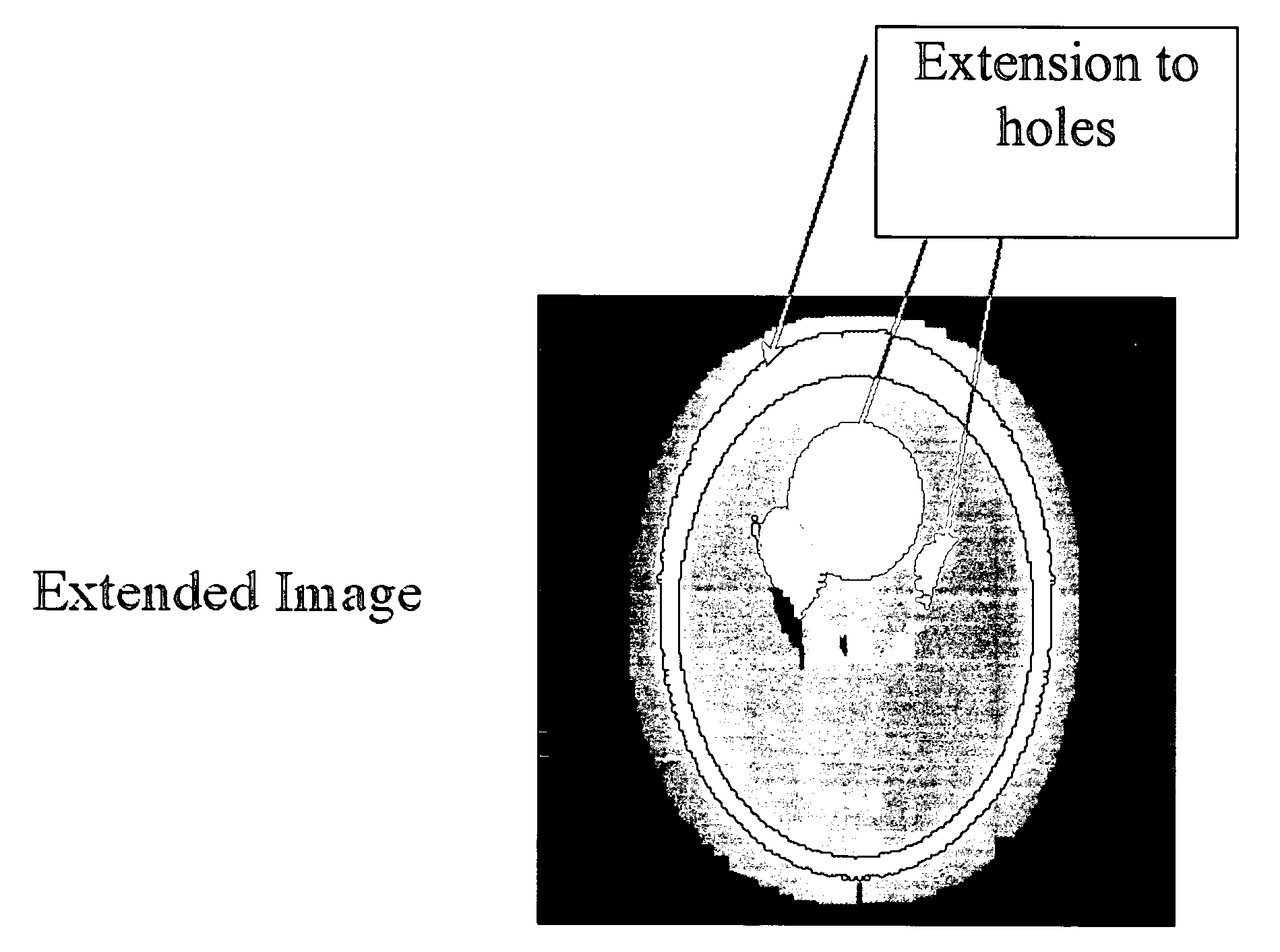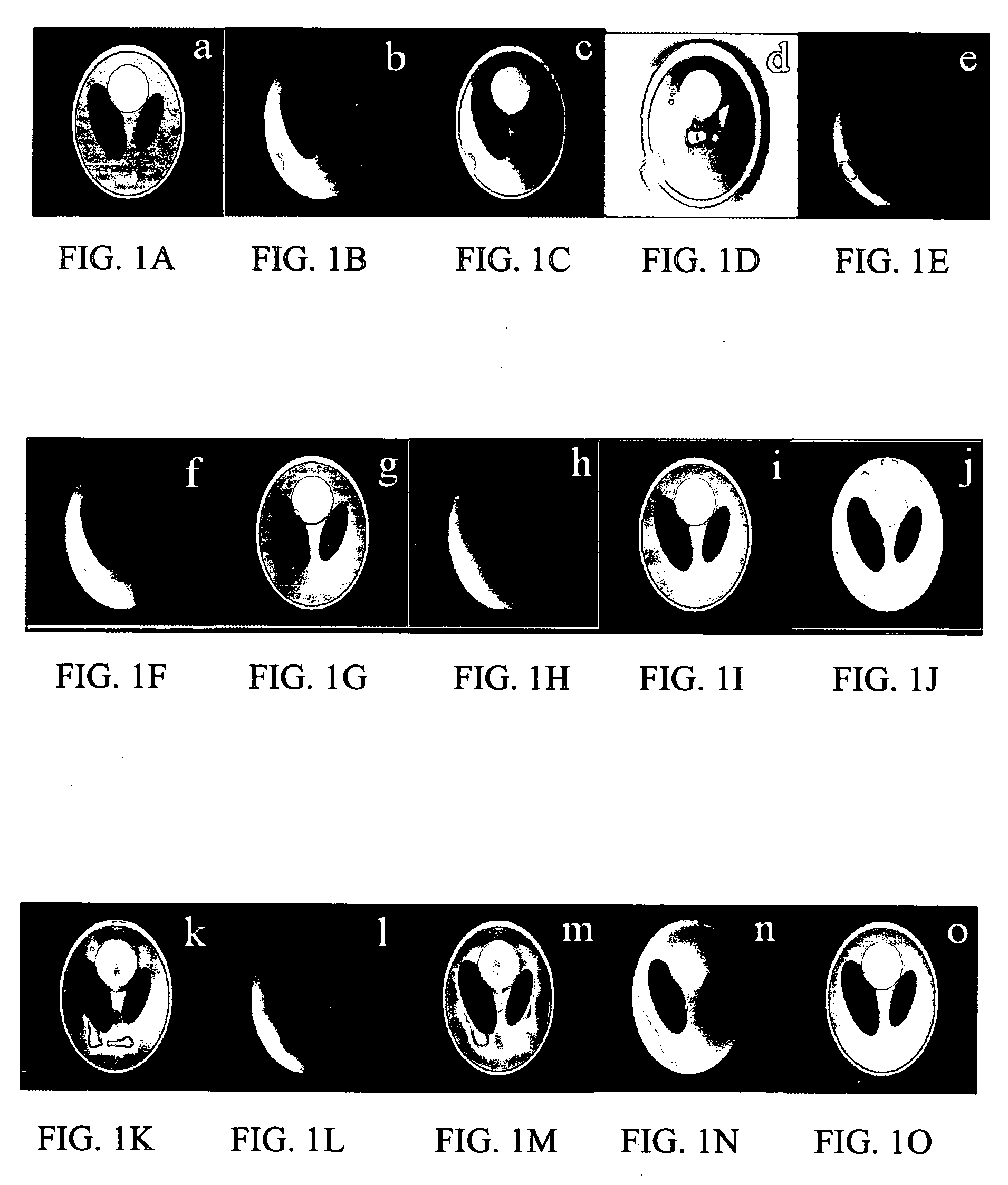Method for image intensity correction using extrapolation and adaptive smoothing
a technology of image intensity and extrapolation, applied in the field of image intensity correction, can solve the problems of inability to apply to previously acquired images, inability to modify the actual imaging procedure, and often suffer from non-uniformity of mri images,
- Summary
- Abstract
- Description
- Claims
- Application Information
AI Technical Summary
Problems solved by technology
Method used
Image
Examples
example 1
[0044] In this example, we evaluate an embodiment of the subject method by using both phantom and clinical data. For evaluation of accuracy, simulated phantom data was used. Histogram and correlation with true uniform image were used as criteria for accuracy. To test the stability, MRI images collected on different MRI systems (GE, SIEMENS, HITACHI) and for different organs (brain images, cardiac images, neurovascular images) were used. For comparison, the results using an embodiment of the subject method were compared with images corrected using Gaussian smoothing (M. S. Cohen, R. M. DuBois, and M. M. Zeineh, “Rapid and Effective Correction of RF Inhomogeneity for High Field Magnetic Resonance Imaging,” Human Brain Mapping, vol. 10, pp. 204-211, 2000), wavelet based method (F.-H. Lin, Y.-J. Chen, J. W. Belliveau, and L. L. Wald, “Removing Signal Intensity Inhomogeneity from Surface Coil MRI Using Discrete Wavelet Transform and Wavelet Packet,” presented at Engineering in Medicine a...
PUM
 Login to View More
Login to View More Abstract
Description
Claims
Application Information
 Login to View More
Login to View More - R&D
- Intellectual Property
- Life Sciences
- Materials
- Tech Scout
- Unparalleled Data Quality
- Higher Quality Content
- 60% Fewer Hallucinations
Browse by: Latest US Patents, China's latest patents, Technical Efficacy Thesaurus, Application Domain, Technology Topic, Popular Technical Reports.
© 2025 PatSnap. All rights reserved.Legal|Privacy policy|Modern Slavery Act Transparency Statement|Sitemap|About US| Contact US: help@patsnap.com



